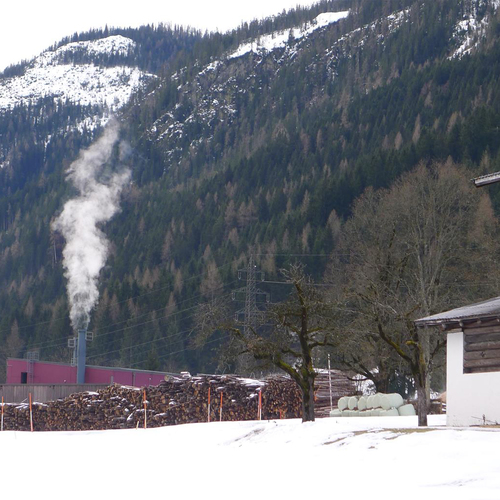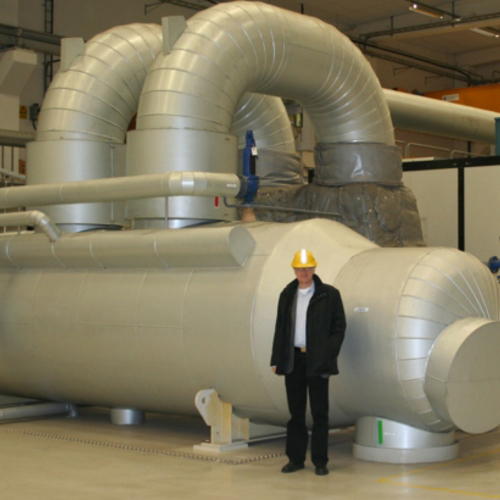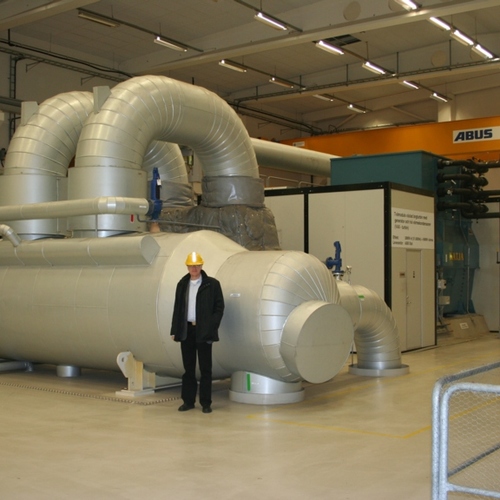A little over a year ago I reported on the efforts of a local organization, Brattleboro Thermal Utility (BTU), to develop a wood-chip-fired “combined heat and power” (CHP) plant for the town. In that column I reported that BTU, on whose board I sit, was trying to identify a company to carry out a preliminary feasibility study for the project; we were also seeking funding for that study.
Funding for the feasibility study was received from Vermont’s Clean Energy Development Fund, with some matching support from the Town of Brattleboro. The Exeter, New Hampshire firm, Waldron Engineering and Construction, was identified to carry out the study, with the Biomass Energy Resource Center in Montpelier, Vermont providing additional technical input. Results of that study are now in, and I’ll provide a brief summary here.
First, a little background on CHP. With conventional power generation in North America, a heat source, such as coal, natural gas, or nuclear fuel is used to create steam, which spins a turbine, generating electricity. Water, usually from a river or lake, is used to cool the steam, condensing it back into water. Only about a third of the “source energy” in the fuel is actually converted into useful electricity; the rest is lost as waste heat–warming the river.
With CHP, waste heat is captured and distributed (through a piping network) as useful thermal energy for space and water heating in buildings and for industrial processes. This approach is common in Europe, especially in Scandinavian countries. In Brattleboro, the hope is that wood chips can be used to operate a CHP plant, with the heat then distributed to buildings and industrial facilities in the downtown area and along the more densely developed corridors in town.
With the feasibility study, BTU wanted to figure out the approximate thermal energy needs in Brattleboro and get a sense of the economics of a wood-chip CHP plant. A key question we needed to answer was whether the plant should be designed and operated primarily for its electrical output (“electric leading”) or for its thermal output (“thermal leading”). An electric-leading CHP plant would have a more consistent year-round revenue source (electricity sales), but it would be necessary to get rid of the excess heat when there isn’t demand for that heat–such as in the summer. A thermal-leading plant would be operated at full capacity only when there is demand for heat, so there isn’t a need to get rid of unwanted heat, but the revenue is much more variable.
So, what did we learn?
Waldron initially created an economic model to compare these two plant configurations (electric-leading and thermal-leading). During the course of the study, the company added a third, “hybrid” option: a thermal-leading plant in which 90% of the energy would be supplied by wood chips and the remainder from oil-fired boilers.
The 15 megawatt (MW) electric-leading plant that was modeled would burn about 240,000 tons of wood chips per year (about 30 truckloads per day) to generate $14 million in electricity sales and $3.1 million in thermal sales. The total cost of this option, including the cost of a hot-water piping system to distribute heat, would be about $89 million.
The thermal-leading plant would burn 29,000 tons of wood chips per year, producing heat for 1.6 million square feet of buildings, along with 1.6 MW of electricity. This much smaller plant would generate $590,000 per year in electricity sales and $2.4 million in thermal energy sales. The total cost of this option would be about $27 million.
The somewhat larger hybrid wood-oil thermal-leading plant that was modeled would burn 32,000 tons of wood chips per year, producing heat for 2.0 million square feet of buildings and 1.9 MW of electricity. This plant would generate $6.3 million in electricity sales and $3.7 million in thermal sales with a total system cost of $24 million. This hybrid option is less expensive because the wood-chip boiler would be sized to provide “baseload” heat, rather than “peak” heat; the oil boiler(s) would fire to satisfy peak heating demand. The hybrid option also provides greater security, by having two heat sources.
While the BTU organization remains very excited about this project, it is not a “slam-dunk” in terms of the economics, though the economics would improve significantly if the cost of oil goes up (for this study $2.40 per gallon was assumed) or if funding is received for a portion of the capital cost. BTU and the town will be examining the results of the feasibility study carefully, gauging the sustainable wood chip supply regionally, considering different ownership models for both the CHP plant and the heat-distribution piping network, determining what funding mechanisms exist for the system, and looking at various sites that could be used for a plant.
For more information, keep an eye on the Brattleboro Thermal Utility website.
I invite you to share your comments on this blog. You can also follow my musings on Twitter.
Weekly Newsletter
Get building science and energy efficiency advice, plus special offers, in your inbox.














0 Comments
Log in or create an account to post a comment.
Sign up Log in